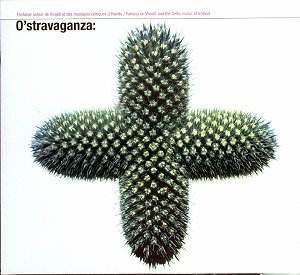This is not such a bizarre cross-over as one might
imagine for in the 18th century the great Irish musician
Turlough O’Carolan, a blind harpist, met the Italian musician Geminiani
in Dublin, and through him encountered the music of, yes, guess who,
Antonio Vivaldi. So here we have a case of substituting Irish instruments
for baroque ones, using baroque instruments to accompany Irish themes,
by creating dialogues between Celtic and baroque instruments, or by
letting all the musicians improvise. One moment we appear to be listening
to a ‘straight’ baroque concerto, then all of a sudden the conventional
string continuo/ripieno of the baroque ensemble (Le Orfanelle della
Pieta) gives way to celtic musicians playing a jig or reel on anything
from a Irish bouzouki to a fiddle.
The baroque group consists of three each of first and
second violins, one viola, two cellos, a bass and harpsichord while
the Irish musicians play Irish fiddle, an Irish flute (like a baroque
flute), tin and low whistles, Uileann pipes, Irish bouzouki, mandolins,
bodhran, bones, and the Celtic harp (played here with metal strings
to resemble its harpsichord counterpart in the other group). There are
a couple of female vocalists in songs using adaptations of ancient Gaelic
texts. Playing standards are excellent in both ‘camps’ and on the whole
the mix makes a series of effortless transitions from one style to the
other. Melodies originating with Vivaldi are not the popular ones (nothing
from The Four Seasons for example) but include one from an oboe
concerto, while two from a violin concerto (in B minor RV 168) have
apparently never been heard on disc before. If there’s not enough snappy,
foot-tapping jigs or reels, but rather too much of a mood of self-indulgent
gloom especially in the vocal numbers, the last two instrumental tracks
sparkle at least.
It’s not quite a case of the Red Priest appearing in
Riverdance but somewhere along those lines.
Christopher Fifield


